HISTORY, ETC: THE VIKINGS DIDN'T WEAR HORNED HELMETS. SO WHO DID?
Historians love ruining fancy-dress parties by pointing out that medieval Scandinavian warriors never had horns on their hats. But other historical figures did, from the Bronze Age to the Tudor court.
When I was a boy, eight or nine years old, an uncle visited from Australia. He came bearing gifts. Mine was a special hat.
It was a yellow baseball-style cap, emblazoned with the logo of an Australian beer brand. Sewn into the side, in a pouch above the right ear, was a little AM radio. This had a tuning dial, a volume control, a single, tiny, black ear-piece, and a metal aerial you could pull up, like a unicorn-horn, to improve the radio reception.
I’ve owned lots of hats since - flat caps and trilbies, snapbacks and beanies, bandanas and bobble-hats. But the Aussie beer radio hat, with its wires, dials and unicorn antenna, was one of the best.
Why am I telling you this? Because this week I have been thinking about incredible historical hats. Or rather, incredible unhistorical hats.
More specifically still: Viking war helmets.
This weekend I read a newspaper article headlined ‘Vikings were too trendy for helmets with horns’. Like any responsible piece of Viking journalism, it reminded readers that the image of a strapping medieval Norwegian with a couple of Aberdeen Angus horns at his temples is pure myth, popularised in the nineteenth century by the costume designs for Wagner’s Ring Cycle.
In other words, the Viking horned helmet is no more historically authentic than Desperate Dan’s Cow Pie.
Debunking this myth is now such a routine part of Viking-ology that it has itself become almost a cliché. Specialist Viking historians roll their eyes when they have to mention helmets. Take this passage from Neil Price’s The Children of Ash and Elm, published in 2020:
Relatively little is known of Viking-Age helmets. Only one approximately complete example has ever been found, at Gjermundbu in Norway. This is a rounded skull cap or iron with a face protector that covered the nose, surmounted by a spectacle-shaped eye guard. The neck and probably the lower face were covered by a curtain of mail... A few other helmet fragments have been found on settlement sites or in burials... Needless to saynoneof them had horns.
That caustic last sentence, with its italicised none says it all. It is a weary sigh. Must we really go over this again?
Yet if historians are quick to pour scorn on Viking horns, they are often a little slower to tell us about people who have worn horned helmets. Which is a shame, because history abounds with examples, ranging from the Bronze Age to the Internet Age. Here are a few of my favourites.
Some of the fanciest horned helmets ever found do come from Scandinavia. However, they date to long before the medieval Viking era. The best known are the so-called Viksø helmets, two ceremonial bronze headpieces dug up in Zealand in 1942, radiocarbon-dated to around 900BC and now on display in the National Museum of Denmark.
Recent scholarly research has noted stylistic similarities between the Viksø helmets and known examples from the Bronze-Age Mediterranean. (The earliest depiction of a horned helmet comes from Cyprus, and has been dated to the 12th century BC.) That is tantalising, as it may suggest trade links between northern and southern Europe during the age of the Old Testament kings.
And there are plenty more examples. In the 1860s a superb Iron Age horned helmet in copper alloy was dredged up from the River Thames in London. Known as the Waterloo Helmet, it has been dated to a couple of centuries before the Roman invasion of Britannia, and its horns are, frankly, magnificent: stout, conical, vaguely reminiscent of a burlesque dancer’s bra. It’s in the British Museum today.
In the Middle Ages, ceremonial helmets continued to feature decorations which could loosely be called horns. In the Neue Burg museum in Vienna, there’s a wild fourteenth-century helmet with sort of antler-wings protruding from the top. It is assumed to have been commissioned by the nobleman Albert von Pranckh, who was so pleased with it that he included its image in his family coat of arms. I’ve always assumed it is the model for King Robert Baratheon’s ‘antler helmet’, which is seen briefly in season one of Game of Thrones.
And then there’s my favourite horned helmet of all, which also has an Austrian connection: it was commissioned by the Holy Roman Emperor Maximilian I, who was born and died in Austria, where he ruled as Archduke. This ‘horned helmet’, today on display at the Royal Armouries museum in Leeds, was gifted to a young King Henry VIII of England in 1511. It was part of a set of parade armour which was destroyed in the seventeenth century, but it’s pretty magnificent in its own right.
There have been one or two mornings where I’ve woken up feeling like it looks.
In recent years, of course, the horned helmet has got a very bad name. The so-called ‘QAnon shaman’ - real name Jake Angeli; real occupation, total jackass; real location, jail - was wearing horns and a fur headdress during the storming of the US Capitol in January 2021.
And no surprise. The alt-right’s obsession with quasi-medieval iconography and imagery is very well documented. (I wrote about it a little in my books Crusaders and Powers & Thrones.) That in part is why many medievalists are at such pains to debunk myths such as ‘the Vikings wore horned helmets’.
But just because idiots like horns on their hats, it shouldn’t mean the rest of us can’t appreciate the long history of that particular style of headgear. Since the dawn of recorded history, people have enjoyed dressing up as the Minotaur, whether to scare their enemies, look good in tournaments or (in my case) listen to the radio. That’s just a fact. I will leave it to psychologists to analyse why.

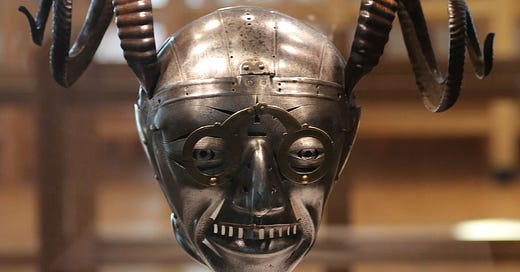



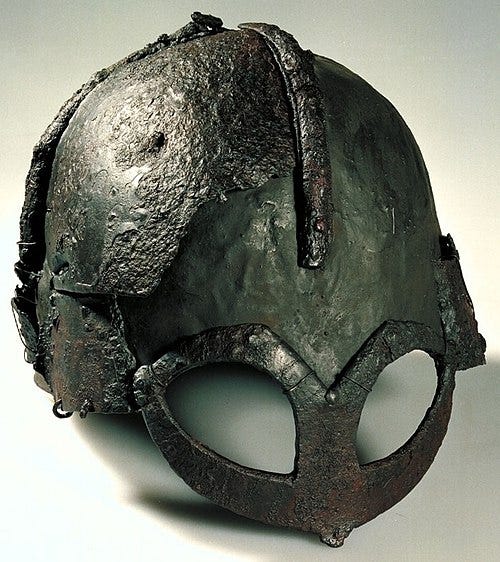
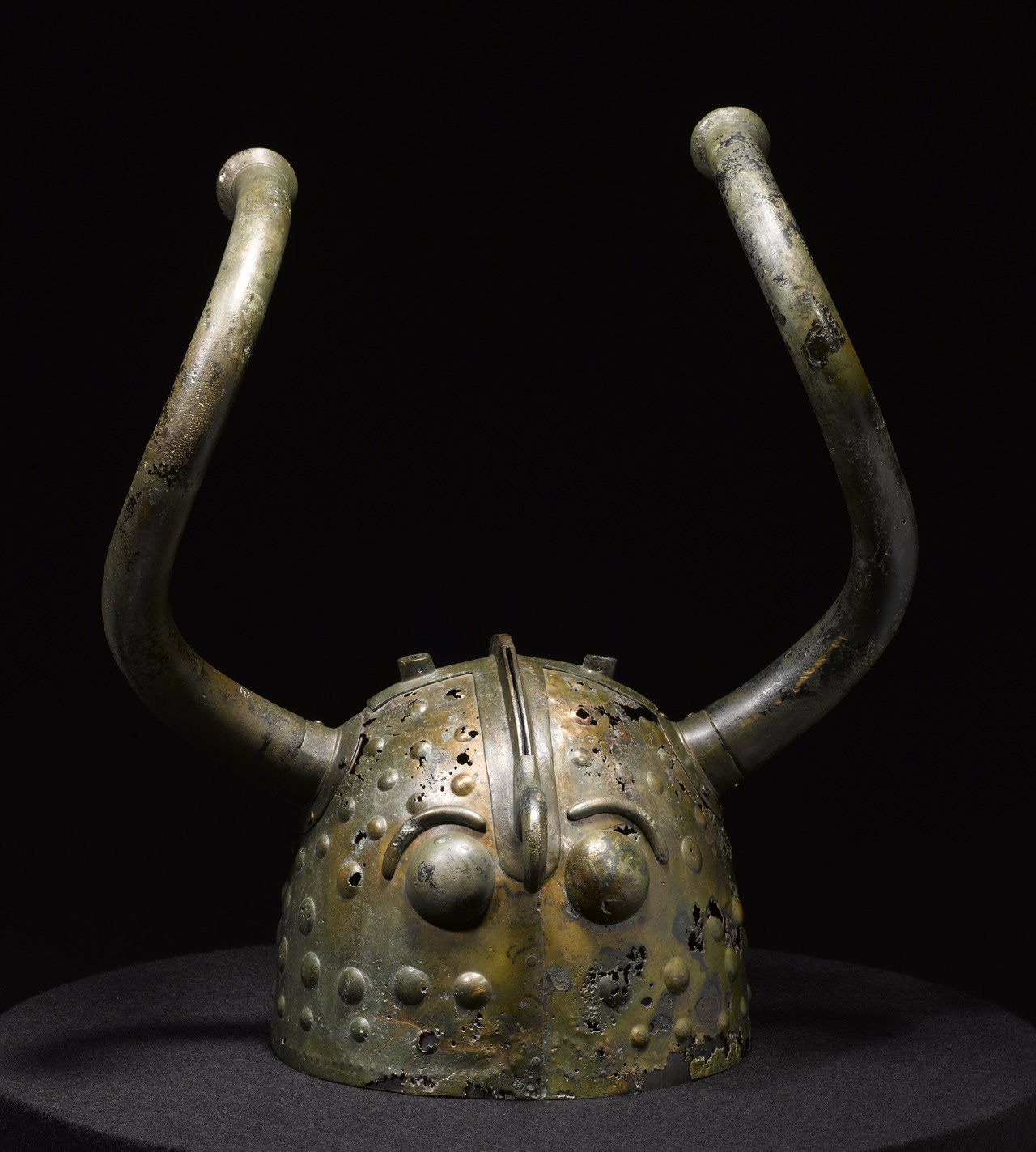
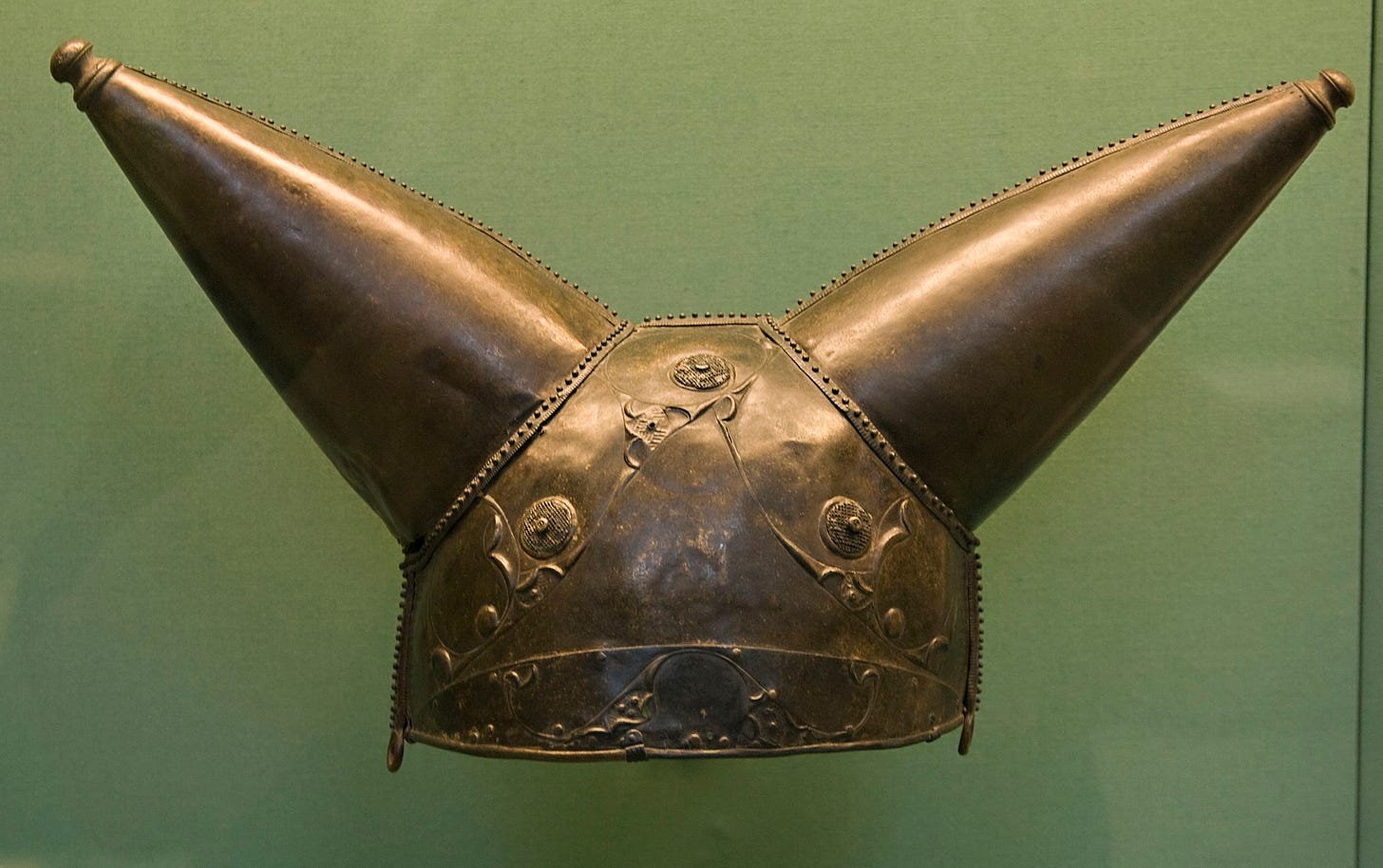
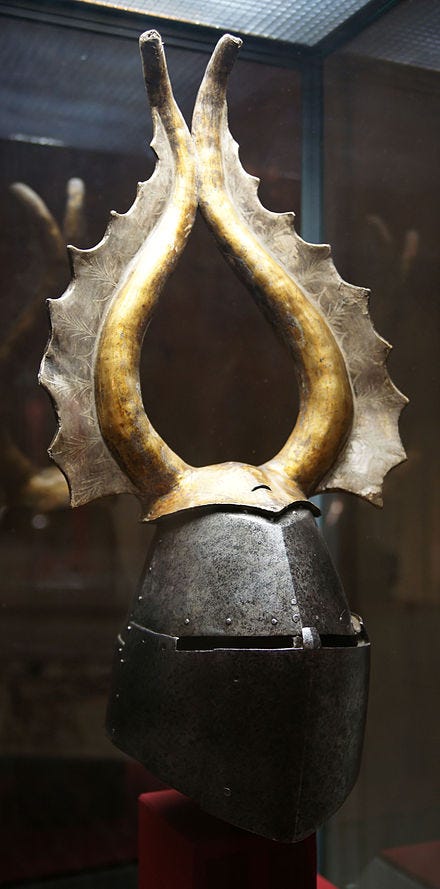

Assassin's Creed Valhalla doesn't have horned helmets. It has Werewolves though. That's a story for another time.
I'll take your horned radio listening and raise you my slightly horned woolly hat, whilst feeding the birds.